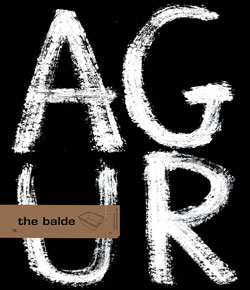
mussche
kirmen uribe.
What the editor says on the back cover is true. He can do no more than explain the book’s intensity. Little by little, with great control, the writer stacks up the boiling emotions in the book right up to the last passage. And there one axe cut follows another until you get a knot in your throat and shed a tear or two. From anger and pride. If you think that a book can’t make you cry, you’re wrong. It doesn’t matter if it’s a novel, a diary, an essay or an epic poem. As long as it’s a tribute to friendship. Mussche is going to have a place amongst Taibo’s archangels. Robert Mussche is what this book is about. And each of us is Mussche.

benditos críticos
laura baleztena, mikel belascoain
More than 30 people have contributed to this CD-book. Musicians, writers, illustrators... all of them speak up for working together and for the connections which are made in these difficult times. The first thing that draws your attention is the book’s duality. Two titles and two sleeves. Mikel Belascoain writes about society and the economy in the texts under the title “memento crítico”. Laura Baleztena, with the title “benditas bacantes”, has written seven short stories in which women are the main characters. The contributors to these interactive
texts, music and illustrations include the groups El Columpio Asesino, Souvenir, Hoey and the Mussels, Jon Ulecia, Las Furias and the artists Hector Urra and Fermin Urdanoz.

alderik alde
maite gurrutxaga.
Maite Gurrutxaga, like all illustrators, takes advantage of any situation or opportunity to start drawing. Illustrators draw from memory in the same way that musicians compose in their heads. Musicians whistle or sing to bring out their music sketches... Illustrators put their internal melodies onto paper. And that is just what Maite Gurrutxaga has brought together in her beautiful notebooks. Like on a palimpsest, the drawings, which look like sketches, address the needs of each moment once and again. This is beautiful illustration work and it’s great to
see it published.

bizientzat eta hilentzat
tomas transtromer. Itzulpena: juan mari agirreurreta.
You heard about Transtormer’s poetry in The balde before he won the Nobel Prize. I came across a Spanish translation of one of this Swedish writer’s book in a bookshop by pure chance five or six years ago. After reading a few poems I decided I had to take it home with me. That’s why it’s great when foreign writers’ works are translated into Basque. Thanks to the work done here we can enjoy this poet’s simple and, at the same time, profound work once again. Few people have written about nature in the way Transtormer does.


